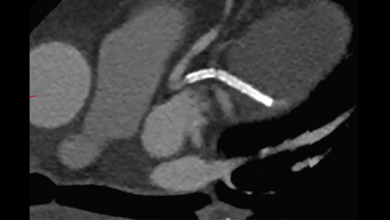Search results
Author(s):
Karl B Kern
,
Sergio Timerman
,
José Antônio Franchini Ramires
Added:
3 years ago
Cardiocerebral resuscitation (CCR) is a relatively new approach to the resuscitation of patients with out-of-hospital cardiac arrest (see Figure 1). By 2003, both the accumulated resuscitation research data and our own local clinical experience in Tucson, Arizona clearly indicated that interruptions of chest compressions had a negative effect on survival. Accordingly, in November 2003 in co…
View more
AI Powered CT Based Non-invasive CAD Testing
Video Series
Author(s):
Tasveer Khawaja
,
Scott Janus
,
Sadeer G Al-Kindi
Added:
1 year ago
Chest Pain in Women
Author(s):
Mariem A Sawan
,
Rebecca S Steinberg
,
Michael N Sayegh
,
et al
Added:
4 months ago
Article
Transvenous Phrenic Nerve Stimulation - A Novel Therapy for Central Sleep Apnea in Heart Failure
Author(s):
Sitaramesh Emani
,
William T Abraham
Added:
3 years ago
Article
Author(s):
Frédéric Michard
Added:
3 years ago
Volume expansion is one of the most common therapeutic procedures in intensive care units (ICUs). There is no doubt that in some cases (e.g. hemorrhage or severe diarrhea) care-givers can reasonably rely on clinical examination to identify patients who will benefit from fluid loading. However, in more complex—but not uncommon—situations (e.g. septic shock), both clinical examination and…
View more
Author(s):
Michael D McGoon
Added:
3 years ago
Pulmonary hypertension (PH) is a hemodynamic condition defined by pulmonary arterial systolic pressure (PASP) above an upper limit of 35mmHg, or by pulmonary arterial mean pressure (PAMP) exceeding 25mmHg at rest.1,2 Pulmonary arterial hypertension (PAH) is present when pre-capillary pulmonary vascular pressure is elevated in the absence of pulmonary capillary wedge pressure >15mmHg, such as…
View more
Author(s):
Robert F Riley
,
James M McCabe
Added:
3 years ago
Heart disease remains the leading cause of death in the US, with ischemic heart disease comprising almost half of these deaths based on the most recent 2013 mortality data.1 While there have been reports of declining rates of acute myocardial infarction (AMI) from various registries and Medicare beneficiary reports, coronary heart disease remained the underlying cause of death in one out of seven…
View more
Author(s):
Hossein-Ardeschir Ghofrani
,
Ralph T Schermuly
,
Norbert Weissmann
,
et al
Added:
3 years ago
Pulmonary arterial hypertension (PAH) has an estimated prevalence of 15–25 cases/million population.1 This chronic, progressive disease is defined by a mean pulmonary arterial pressure >25mmHg in conjunction with normal pulmonary capillary wedge pressure <15mmHg.2 The disease is characterized by increased vascular resistance of the pulmonary microvasculature, ultimately resulting in right…
View more
The Digital Ballistocardiograph
Author(s):
Geoffrey Houlton
Added:
3 years ago
Article












